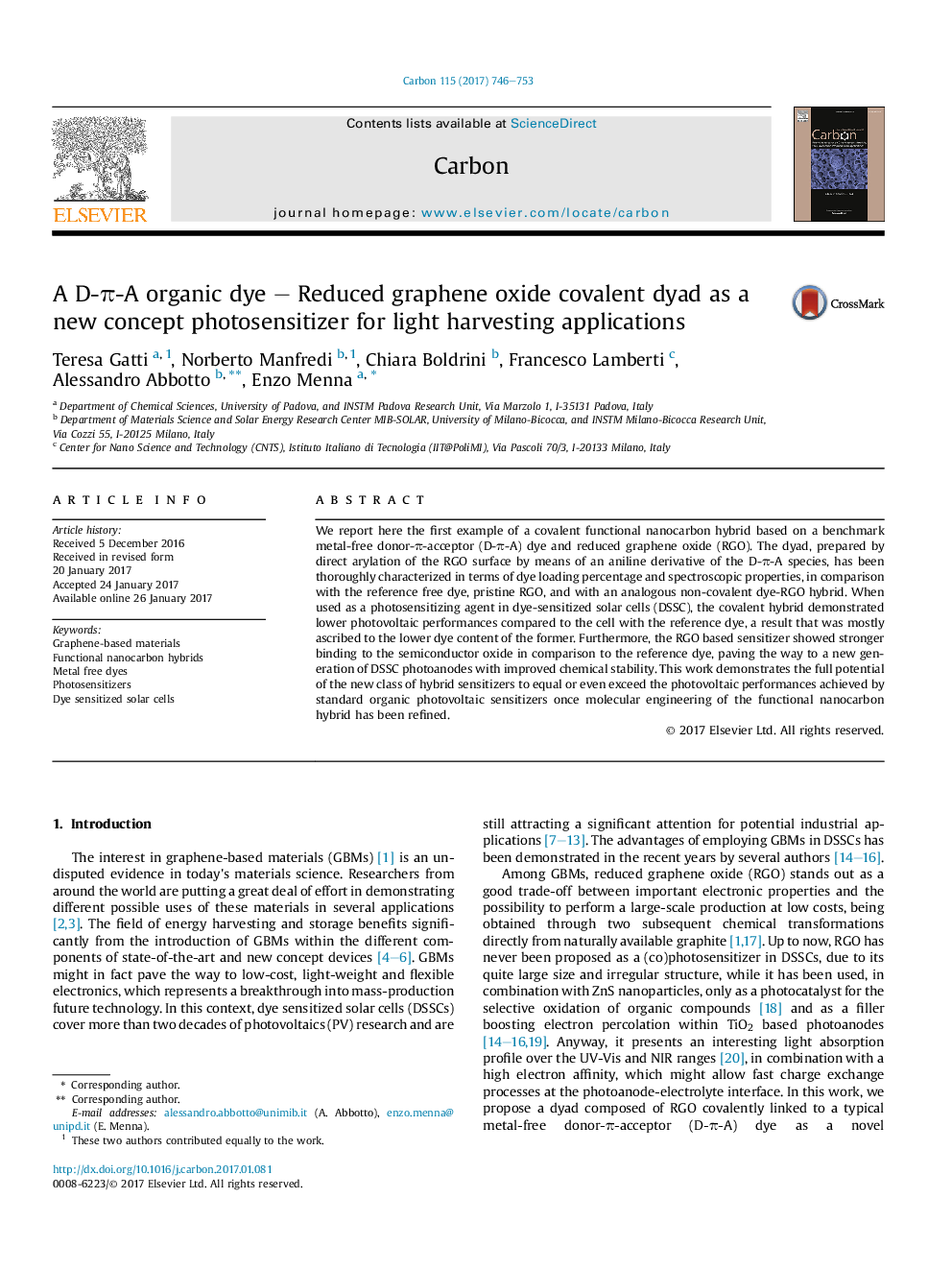| Article ID | Journal | Published Year | Pages | File Type |
|---|---|---|---|---|
| 5432322 | Carbon | 2017 | 8 Pages |
We report here the first example of a covalent functional nanocarbon hybrid based on a benchmark metal-free donor-Ï-acceptor (D-Ï-A) dye and reduced graphene oxide (RGO). The dyad, prepared by direct arylation of the RGO surface by means of an aniline derivative of the D-Ï-A species, has been thoroughly characterized in terms of dye loading percentage and spectroscopic properties, in comparison with the reference free dye, pristine RGO, and with an analogous non-covalent dye-RGO hybrid. When used as a photosensitizing agent in dye-sensitized solar cells (DSSC), the covalent hybrid demonstrated lower photovoltaic performances compared to the cell with the reference dye, a result that was mostly ascribed to the lower dye content of the former. Furthermore, the RGO based sensitizer showed stronger binding to the semiconductor oxide in comparison to the reference dye, paving the way to a new generation of DSSC photoanodes with improved chemical stability. This work demonstrates the full potential of the new class of hybrid sensitizers to equal or even exceed the photovoltaic performances achieved by standard organic photovoltaic sensitizers once molecular engineering of the functional nanocarbon hybrid has been refined.
Graphical abstractDownload high-res image (273KB)Download full-size image
